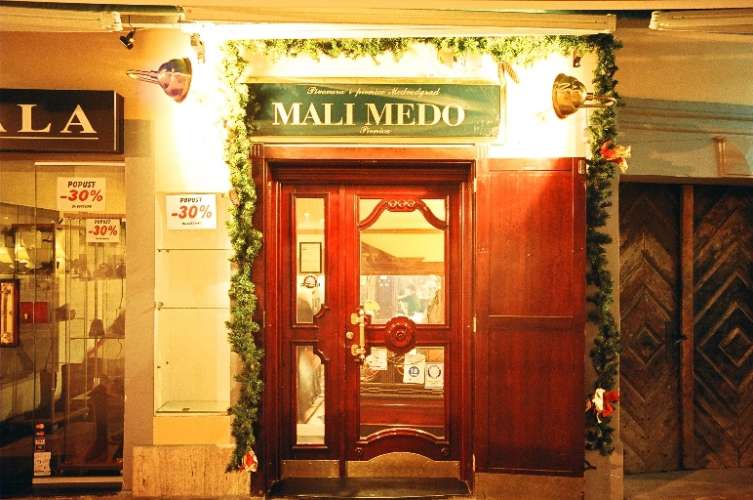back to England
53 Carey St, London WC2A 2JB
- Quality and/or choice of drinks – 7/10
- Style and Décor – 9/10
- Character, Atmosphere and/or Local Life – 9/10
- Amenities, Events & Community – 7/10
- Value for Money – 5/10
- The Pub-Going Factor – 8/10
Claiming to originate in 1602, the building itself containing The Seven Stars has survived The Great Fire of London, and – just as impressively in my view – the next 400 years of change unscathed, all the while serving as a public house. It’s a remarkable feat that places it as one of London’s core heritage pubs.
Many pubs trade on their history, (and that of The Seven Stars is an interesting read) , without backing that up by being an enjoyable place to drink in the here and now. Thankfully, The Seven Stars is not one of those places: it’s a little cracker.
Carey Street has a row of townhouses that are overshadowed by the enormous London County Court, Royal Courts of Justice and LSE library, so it is quite easy to wander halfway past The Seven Stars before realising. It’s a very quiet street and doesn’t seem the most likely place for a pub to be situated these days, though that makes it a perfect venue for those in-the-know. The frontage of The Seven Stars is squat and compact with the predictable (but entirely appropriate) gothic signage. It looks like a small place and it is – there’s no TARDIS effect once you walk inside.
Although micro-pubs may now be reversing the trend for enormous, open plan pubs, none of them are made quite like this old thing. You’ll walk through the entrance to find a low-beamed venerable establishment with a bar directly opposite the entrance, and a narrow space set over two rooms. There are stools to sit at the bar and drink, and tables decorated with checked tablecloths and candles (a little dressy for my tastes, but it did make me think fondly of Den Turk in Ghent, which is not dissimilar).
For the last decade or so, The Seven Stars has been the domain of a ruff-sporting and locally famous pub cat who sadly passed away not so long back. Nevertheless, I have been informed a new cat has entered the premises! If you venture into conversation at the bar with the owner Roxy, she may expand on the and possibly get into the tale of one punter who mistook the cat bowl for bar snacks. Don’t be shocked – anything can happen in London.
The décor and ‘lived-in’ nature of the pub is where most of its character comes from, a pleasingly ungentrified and carefully preserved sense of welcome that tends to strike an immediately positive impression with people regardless of any preconceived ideas. This impression is important to cling onto for when you order a beer (or food), because those London prices hit hard and hit deep. This isn’t worth singling The Seven Stars out for, however, that’s just how things are. It is worth bearing in mind a lot of lawyers drink here.
Nevertheless, you’ll find a set of well kept cask ales from regional breweries served via hand pump – it’s a decent if unspectacular range which will keep you satisfied for at least a few.
In a similar way to Whitelock’s in Leeds, the toilets are located above the pub itself via a satisfyingly creaky staircase, where you will also pass by the kitchens and a room crammed full of odds and ends. By any standards these days (particularly London’s), this is a characterful and individual place that isn’t interesting in the Farrow & Ball school of interior design or repainting itself to remain ‘on-trend’ every ten years.
As mentioned above, the pub is popular with local lawyers and court staff, and due to the small size you may find yourself unable to grab a seat. However, trade is brisk in the evenings so be patient and things will move along – grab your chance when you see it. There’s nothing like being seated to enjoy the atmosphere of a tangle at the bar in a traditional pub such as this.
As the lights from the outside dim, and those from the inside take over, there can be no question of whether this is a pub of outstanding merit.
Although The Seven Stars may have lasted 400 years, the obnoxious pace of gentrification in the last 30 years means that pubs like these perpetually under threat from people who simply want to run poor facsimiles of bars they’ve seen elsewhere. This is a pub that demonstrates the importance of being your own thing. That’s worth something.
I’ll leave you with this anecdote from their website:
“While enjoying a few Friday afternoon wind-down drinks, a group of 15 or so lawyers (young ones) entered the Seven Stars awkwardly and decamped nearby. There then began a cacophonous symphony of table and chair scraping, until they had blocked all passage in or out of the bar. Regaling of a most competitive flavour followed, ever louder, underwritten by a desperate, pleading “notice me” subtext. Its volume only matched by the ethereal transparency of its content. We drank up and moved on – our seats snatched hungrily into their possession before we got to the door. Congratulations, you’ve emptied the pub! Not all lawyers are like this, true, but this was selfish and shameful behaviour. Hopefully, few noticed.”
Have you visited The Seven Stars? Any comments, feedback or suggestions for our write-up? Please get in touch!
















